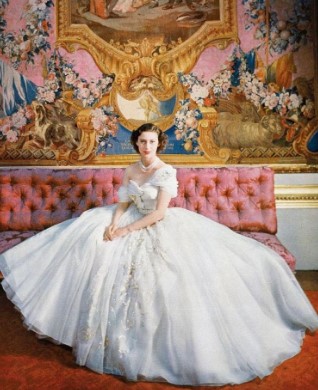The Evolution of Fashion Throughout History
Fashion has been a prominent aspect of human society since the beginning of civilization. It is an ever-changing phenomenon that reflects cultural, social, and economic changes throughout history. From ancient times to modern-day, fashion has played a significant role in defining different eras and expressing individual identity.
Ancient Times (3500 BC – 500 AD)
The earliest evidence of fashion dates back to ancient times, where clothing was used for practical purposes such as protection from the elements and social status. In Egypt, clothing was highly symbolic and denoted a person’s rank in society. Women wore long, flowing dresses while men typically wore tunics and loincloths. In Greece, togas were the most common garment for both men and women, but the styles differed depending on social class.
Middle Ages (500 AD – 1500 AD)
During the Middle Ages, fashion was heavily influenced by religion and social hierarchy. The wealthy adorned themselves with lavish fabrics and intricate designs, while peasants wore simpler garments made from cheaper materials. Women’s clothing consisted of long dresses with fitted bodices and flowing sleeves, while men wore tunics and hose.
Renaissance (1500 AD – 1600 AD)
The Renaissance period saw a shift towards more elaborate and extravagant fashion. Clothing became an essential tool for self-expression, and wealthy individuals would commission clothing to showcase their wealth and status. Women’s dresses featured voluminous skirts with ornate embellishments, while men’s clothing consisted of tailored doublets and breeches.
Enlightenment (1600 AD – 1800 AD)
During the Enlightenment era, fashion became more refined and sophisticated. The focus shifted from extravagant designs to a more simplistic and elegant style. Women’s dresses became less voluminous and featured high waists, while men’s clothing evolved into three-piece suits with powdered wigs.
Industrial Revolution (1800 AD – 1900 AD)
The Industrial Revolution brought about significant changes in the fashion industry. Mass production of clothing became possible, leading to more affordable and accessible fashion for all social classes. Women’s clothing saw a shift towards more practical designs, such as corsets and hoop skirts, while men’s fashion remained relatively unchanged.
20th Century (1900 AD – Present)
The 20th century brought about rapid changes in fashion, with styles evolving at a faster pace than ever before. The introduction of new fabrics and clothing manufacturing techniques led to a more diverse range of fashion choices. Trends such as flapper dresses, mini skirts, and bell-bottoms all made their mark on the fashion world.
Modern-Day Fashion
Fashion today is greatly influenced by globalization and technology. Fast fashion allows for quick trend changes, enabling self-expression through clothing. The industry evolves through sustainability and inclusivity. Fashion’s evolution is ongoing, reflecting our ever-changing world and shaping culture. It’s more than just clothes; it’s a piece of history.
The Impact of Fashion on Society
Throughout history, fashion has not only served as a means of self-expression but also as a reflection of societal norms and values. Clothing styles have been used to reinforce gender roles, social status, and cultural identity. In some cases, certain fashion trends have even sparked political or social movements.
The Rise of Sustainable and Ethical Fashion
In recent years, there has been a growing awareness of the environmental and ethical impacts of the fashion industry. As a result, many brands have shifted towards sustainable practices and ethical sourcing of materials. This movement towards conscious fashion has had a significant impact on the industry and continues to be a driving force in shaping its future.
The Influence of Technology on Fashion
Technology has played a crucial role in the evolution of fashion. From the invention of the sewing machine to digital design software, technology has revolutionized the way clothing is made and marketed. Social media has also had a significant impact, allowing for instant sharing of new styles and trends, making fashion more accessible than ever before.
Conclusion
Fashion continues to evolve and shape our world, reflecting society’s changes and serving as a form of self-expression. From ancient times to the modern-day, fashion has played a significant role in defining eras and shaping culture. It is an ever-changing phenomenon that will continue to evolve with the times, reflecting our society’s values and beliefs. So let us embrace fashion not just for its beauty, but also for its rich history and cultural significance. So next time you put on your favorite outfit, remember that it’s more than just a piece of clothing; it’s a part of our shared history. So let us continue to celebrate and appreciate the evolution of fashion throughout time.
